Learn how to cook prime rib roast (standing rib roast) that's juicy, tender, and perfectly cooked! Read on for cooking times and temperatures using the reverse sear method. Serve with our au jus sauce on Thanksgiving, Christmas, Easter, holidays, or any occasion!

Prime rib roast, standing rib roast, Christmas roast, holiday roast, ribeye roast, beef bone-in rib roast - it goes by many names, but whatever you call it, it's a tender, juicy cut of meat that's slow roasted in the oven and full of rich, meaty flavor.
For this recipe, I used a standing rib roast, which means the bones are still attached to the prime rib. It's called a standing rib roast because it's roasted while "standing" or resting on the bones.
This tastes amazing when served with our prime rib au jus sauce that can be made with or without drippings.
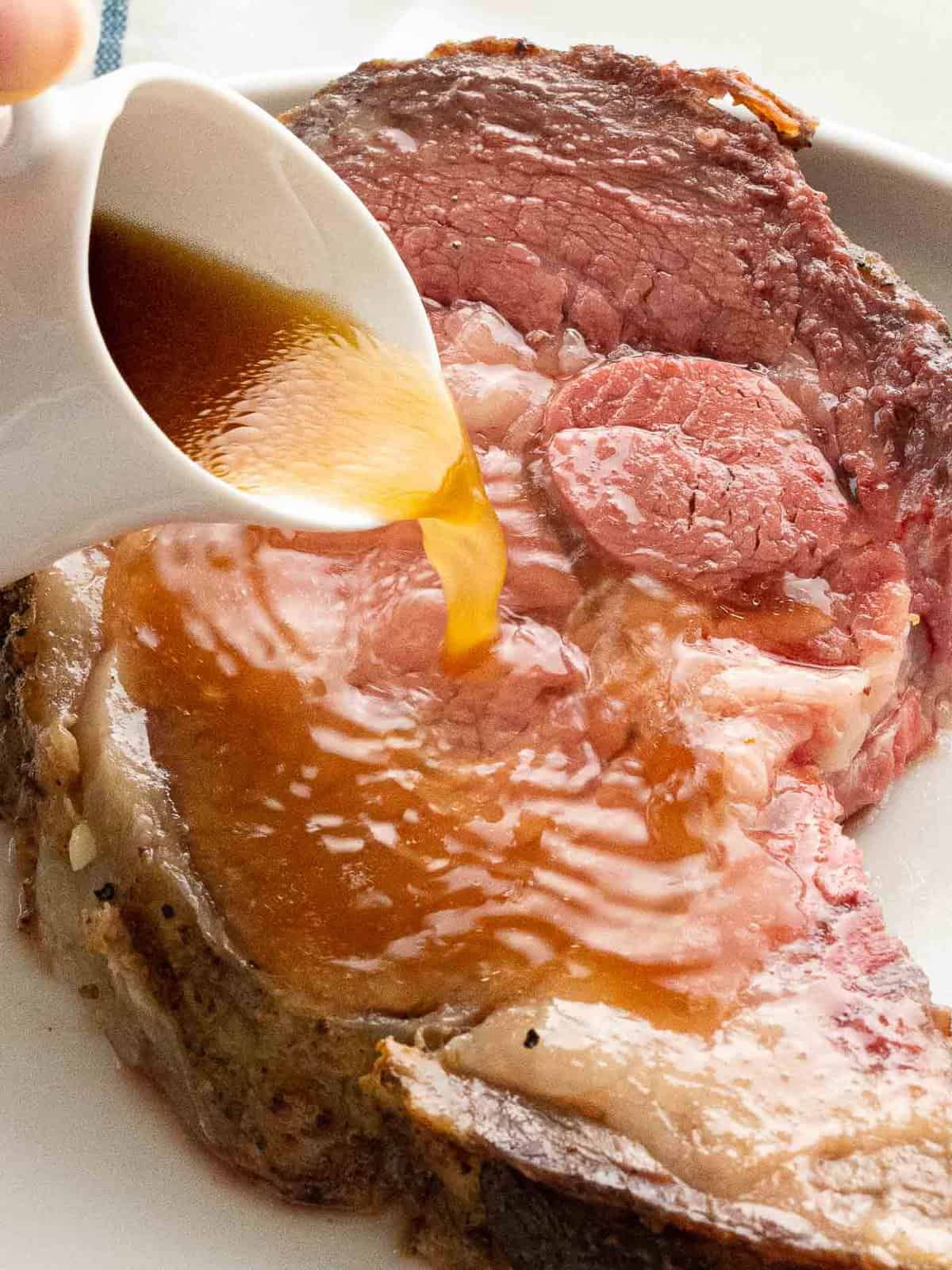
Estimated Cooking Time
Use this as an estimate for bone-in prime rib roast or standing rib roast. Depending on the size and shape of the roast, your times will vary. Always check the internal temperature using a meat thermometer.
| Weight | Internal Temperature (Remove from Oven) | Estimated Time |
|---|---|---|
| 4 to 5 lbs | 118°F (48°C) | 3 hours |
| 6 to 7 lbs | 118°F (48°C) | 3.5 hours |
| 8 to 9 lbs | 118°F (48°C) | 4 hours |
| 10 to 11 lbs | 118°F (48°C) | 4.5 hours |
*Estimated time is based on roasting temperature of 250°F (121°C).
Prime rib roast is relatively straight forward, though a time consuming recipe. The most important part of making a rib roast is the temperature. I highly recommend an oven safe meat thermometer that you can leave in the meat inside the oven.
Prime Rib Roast Cooking Temperature
This recipe uses the reverse sear method which means we start the roast at a low temperature of 250°F (121°C) and finish in a hot oven 550°F (288°C) to crisp and brown the crust.
| Doneness | Internal Temperature | Resting Time | Final Temperature |
|---|---|---|---|
| Rare | 115°F (46°C) | 20 to 30 minutes | 120°F (49°C) |
| Medium Rare | 118°F (48°C) | 20 to 30 minutes | 125°F (52°C) |
| Medium | 123°F to 125°F (51°C to 52°C) | 20 to 30 minutes | 130°F to 135°F (54°C to 57°C) |
| Medium Well | 133°F to 135°F (56°C to 57°C) | 20 to 30 minutes | 140°F to 145°F (60°C to 63°C) |
| Well | 143°F to 150°F (62°C to 66°C) | 20 to 30 minutes | 150°F to 160°F (66°C to 71°C) |
- Internal Temperature - This is the temperature to remove your prime rib from the oven. Set an alarm if your meat thermometer has this.
- Final Temperature - As we roast at a low temperature, expect anywhere from 5 to 10 degrees of carry over cooking (residual heat) during the resting time. Note: This depends on the size and shape of your prime rib roast as well as ambient temperature in your kitchen during the resting period. Also, if you decide to roast at a higher temperature than stated, there will be greater carry over cooking.
Why reverse sear?
I prefer using the reverse sear method because I find it results in a crispier and more browned crust while still having a tender, juicy center that's evenly cooked.
Another reason why I prefer it is because it allows for more flexibility with serving time. You can wait for your guests to arrive while resting the meat and sear it in the oven 10 minutes before serving.
Everyone gets a fresh-out-of-the-oven slice of prime rib with a perfectly browned crust. There's no need to rest the meat again after searing.
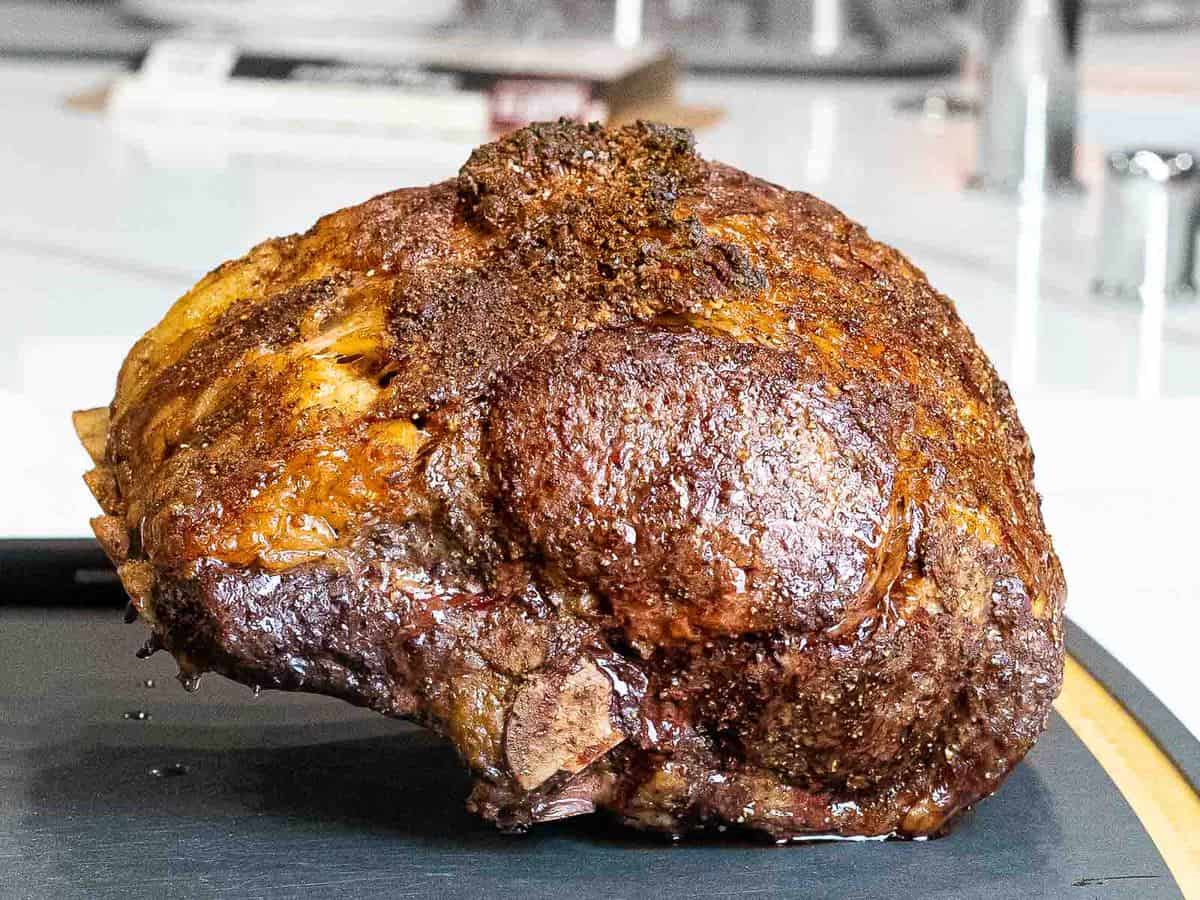
The crispy, crackly crust after the reverse sear is full of crunchy texture and made up of browned bits that are deliciously salty and fatty. A simple salt and pepper rub applied overnight is all that took to flavor this.
Letting the ribeye roast air dry overnight with the rub allows it to better absorb the seasoning.
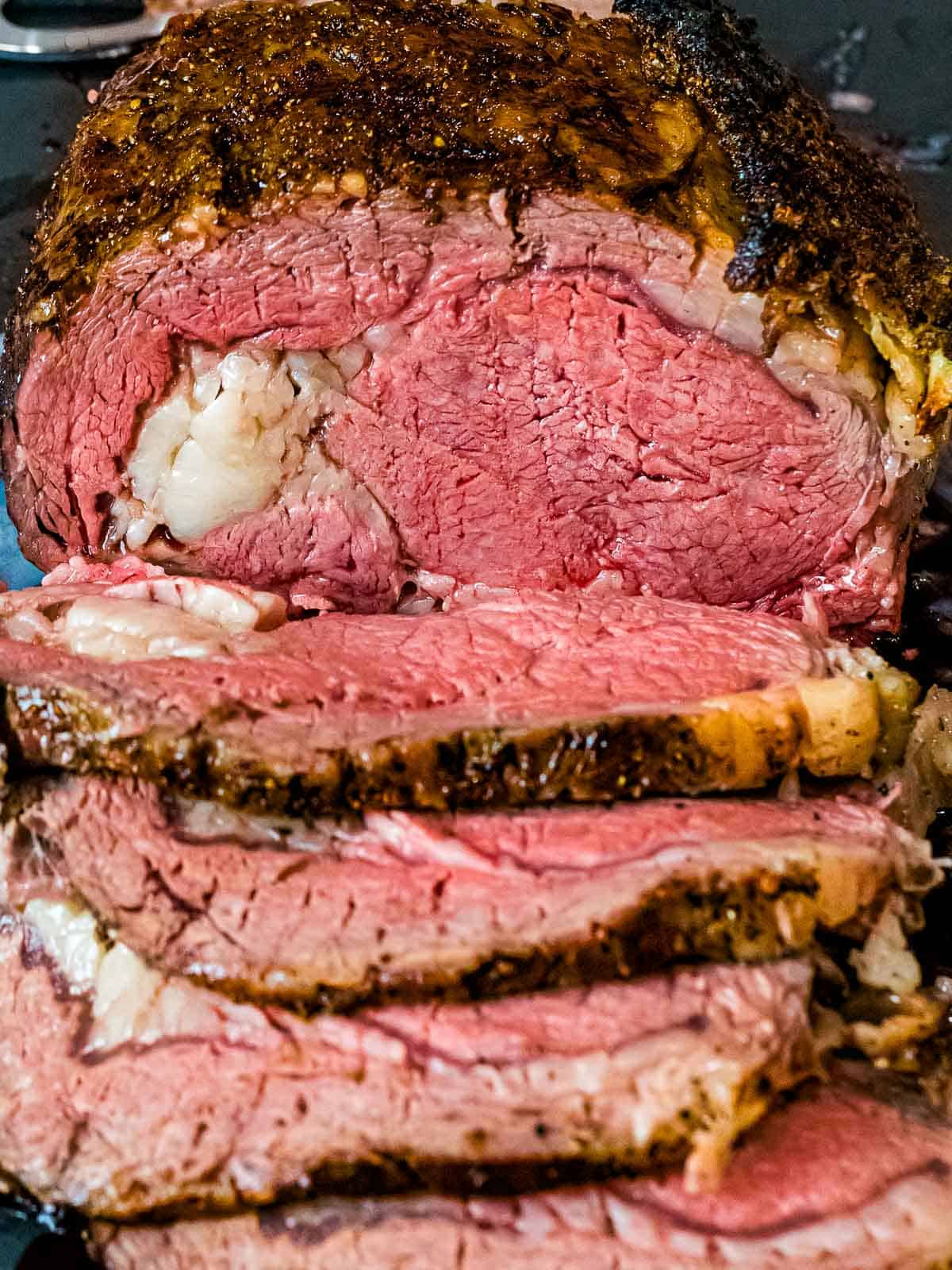
How to Select Prime Rib
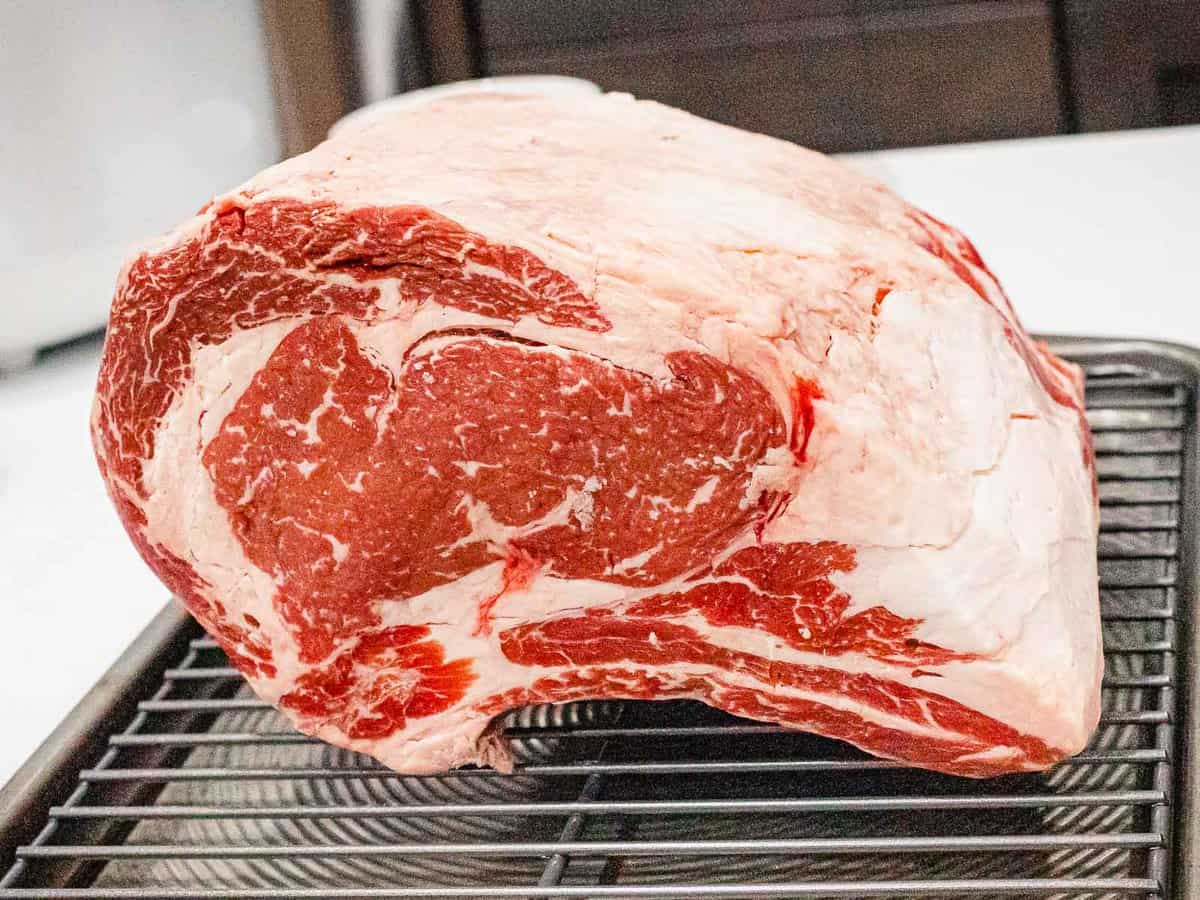
There are three grades of prime rib - select, choice, and prime. What you want to look for when selecting a prime rib roast is one that's well marbled, with enough fat on the fat cap, and with the bones still attached.
I used a prime grade rib roast which is more expensive but worth it to get that rich, meaty flavor. Note: prime grade roast is also called beef bone-in rib roast. You can find it in most specialty butchers and select Costcos, especially around the holidays like Christmas, Thanksgiving, and Easter.

You can ask your butcher to remove and re-attach the bones with twine if you prefer. Keeping the bones close to the meat helps insulate the meat from direct heat and it provides a built-in rack for the meat to roast on.
Another option is to have the bones frenched which means cleaning and removing excess fat or meat so that the bones are exposed.
Instructions
- Liberally apply salt and pepper all over the standing rib roast, including the underside and fat cap. Keep it in the fridge overnight, uncovered to air dry and let the meat absorb the salt.
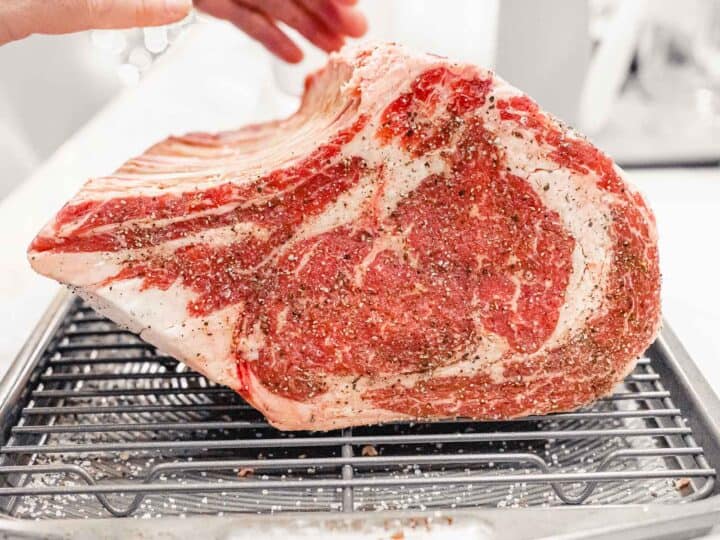
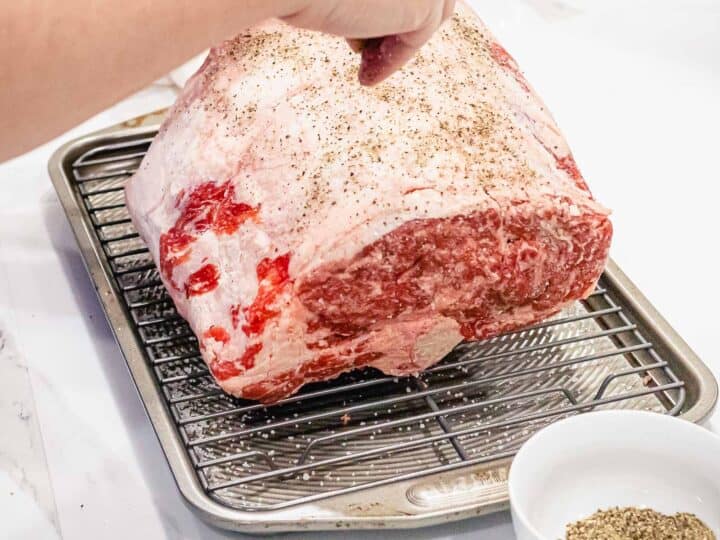
- Take the meat out and set it on the counter for 1 hour to help with even cooking. Place it on a roasting rack fat-side up inside a roasting pan. Insert a meat thermometer into the fullest part of the meat.
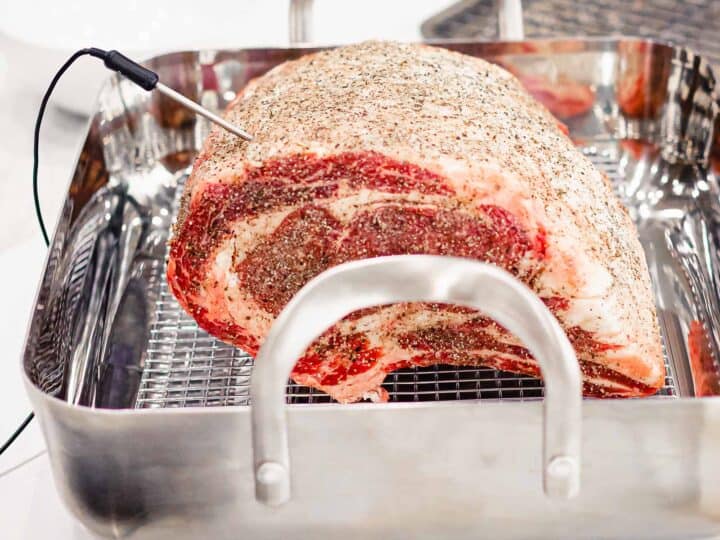
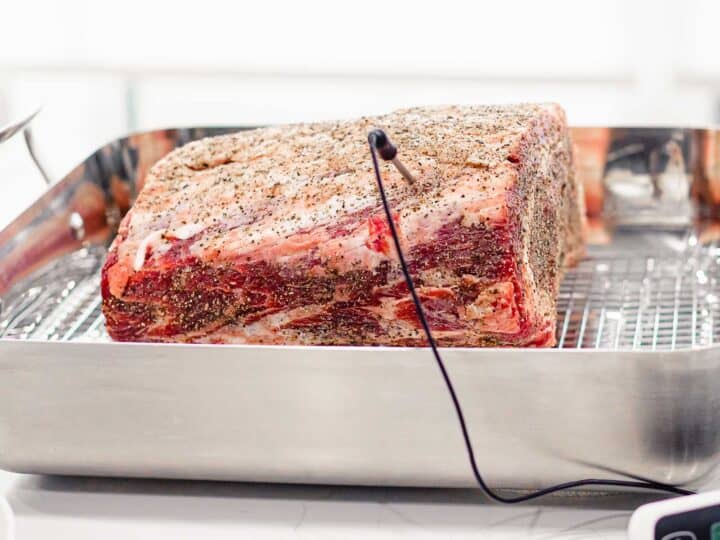
- Slow roast it in the oven at 250°F (121°C) until the internal temperature reaches your desired target. See the Cooking Temperature Chart below in the Notes section of the recipe card.
- Remove from the oven and loosely cover with foil. Let it rest for 20 to 30 minutes. You will see the temperature rise due to the residual heat or carryover cooking.
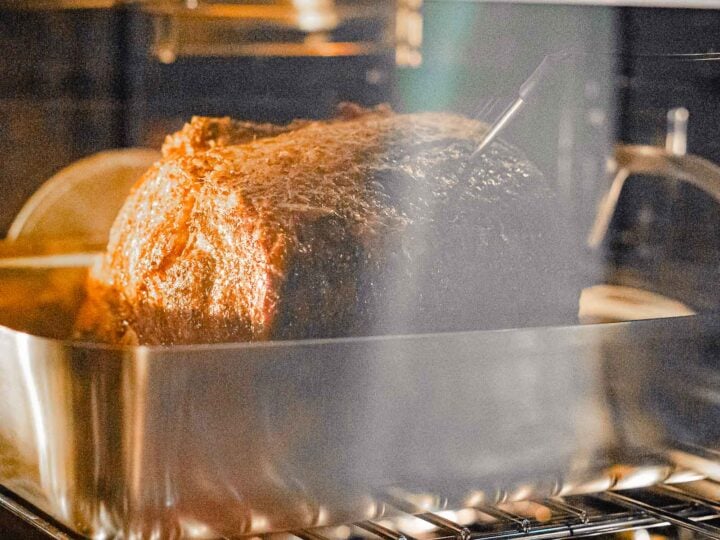
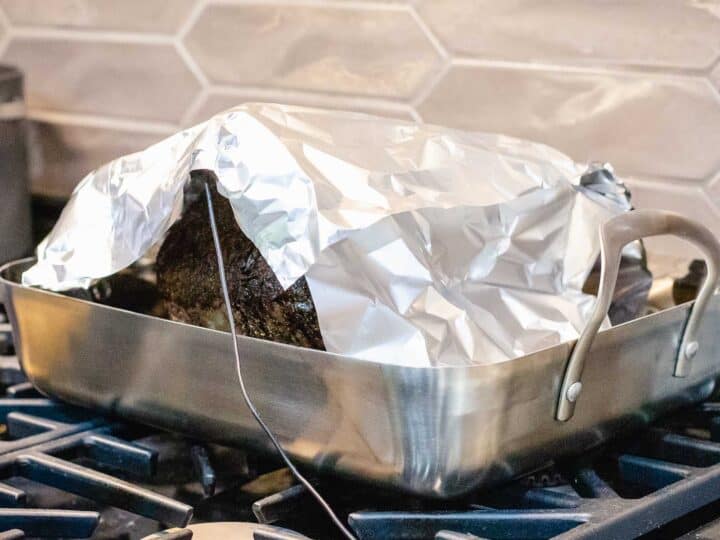
- Meanwhile, heat your oven to 550°F or as high as it will go. Once your oven is hot, add the meat back into the oven to sear the outside until browned and crispy. This is the reverse sear step.
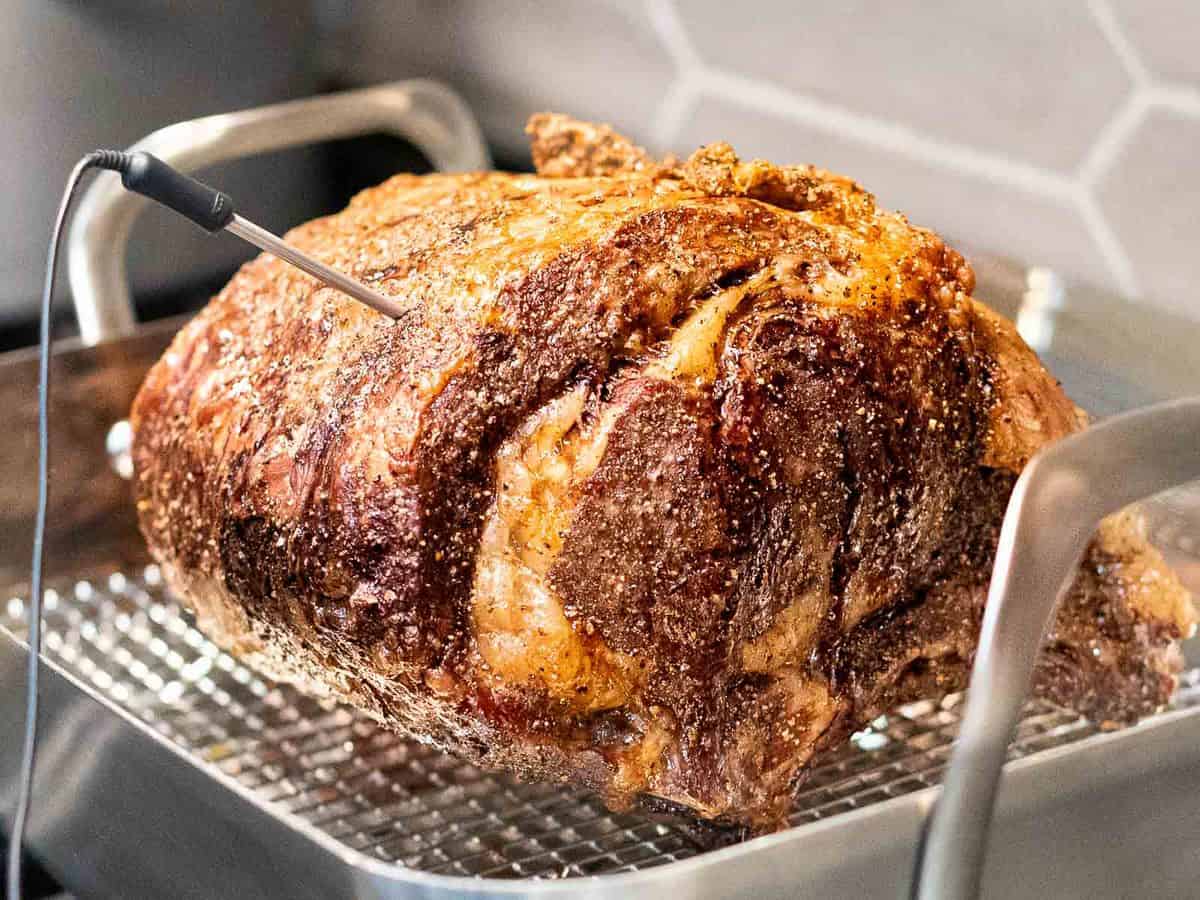
- Remove the ribs from the roast. Save them for another meal - they're delicious roasted in the oven.
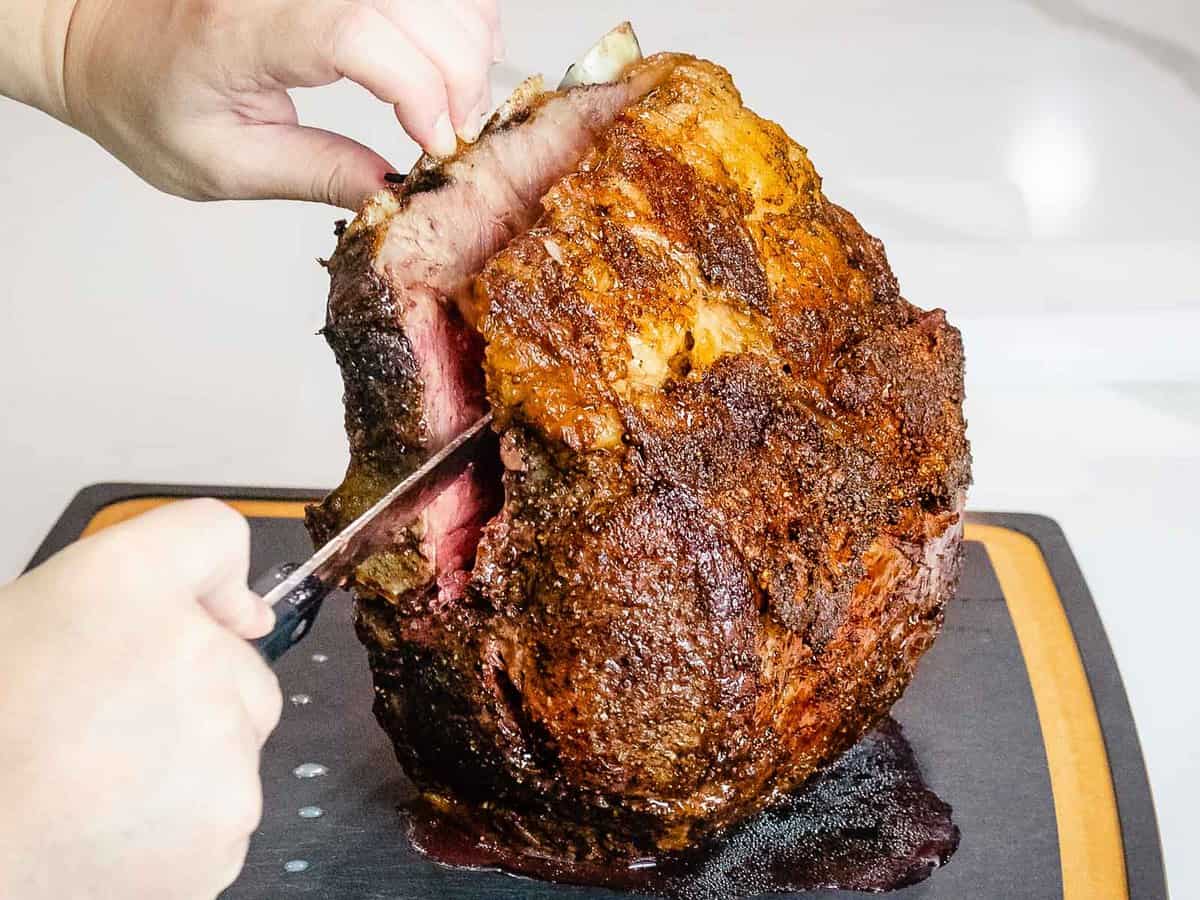
- Carve into slices and serve immediately.

FAQs
Wrap the rib roast in foil to prevent drying out and reheat in a 300°F oven until warmed through.
Store leftovers in an airtight container and keep in the fridge for up to 3 days. To freeze, wrap it tightly in plastic wrap to prevent freezer burn. Then store in an airtight freezer safe container for up to one month.
We've been making this as a Christmas roast during the holidays for the past 8 years and this technique works every time without fail! It's a foolproof recipe that always results in tender, juicy, perfectly cooked rib roast!
Serving Suggestions
Christmas roast goes great with any of these sides during the holidays:
- Easy Au Jus (No Drippings Needed)
- Southern Baked Mac and Cheese with Breadcrumbs
- Easy Sauteed Mushrooms with Garlic Butter
- Perfect Baked Sweet Potatoes - Baking times and optional toppings included!
- Garlic Mashed Potatoes with Garlic Butter
- Creamy Sour Cream Mashed Potatoes with Chives
- Roasted Kabocha Squash | Japanese Pumpkin
- Chinese Style Dry Fried Garlic Green Beans
Recipe
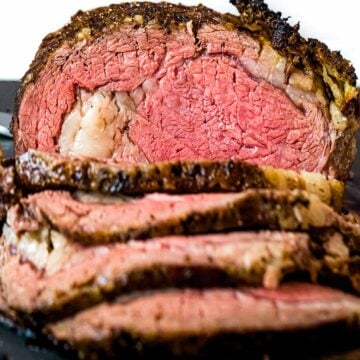
Prime Rib Roast | Standing Rib Roast
Equipment
☑ Ingredients
- 1 standing rib roast (prime rib with bone in) - See Note 1
- 1 Tablespoon freshly ground black pepper
- sea salt - about 2 to 3 teaspoons per 5 lbs (2.27 kg)
Instructions
Prep the Prime Rib
- Apply rub: Place the standing rib roast on a metal rack with a baking sheet beneath it. Liberally apply sea salt and fresh pepper all over the prime rib, including the underside. Rub it in with your fingers so it adheres to the meat. Season overnight: Set it in the fridge to season overnight, uncovered. The roast will absorb the salt, resulting in a juicier prime rib.
- Place in a roasting rack: Remove the prime rib from the fridge and set it on a roasting rack inserted into a roasting pan. Place it fat cap up and insert an oven-safe thermometer into the thickest part of the rib roast. (Note: The salt should have fully absorbed into the prime rib.) Set it out for 1 hour on the counter to help with even cooking.
Roast
- Roast: Position your oven rack to the lower middle of the oven and place the rib roast on top. Set the temperature to 250°F (121°C). Roast until the internal temperature reaches your desired doneness. Remove at 118°F or 48°C for medium rare. See Note 2 for complete cooking temperature chart.
- Rest: Remove from the oven and loosely cover with foil. Let it rest for 20 to 30 minutes. You should see the internal temperature rise from the residual heat.
- Reverse sear for brown crust: Increase your oven temp to 550°F (288°C) or as high as it will go. Once hot, place the rib roast back in the oven just until the crust is browned and crisp, anywhere from 4 to 8 minutes, depending on your oven. Watch carefully for burning, do not walk away during this step.
- Remove bone: Once the crust is seared, remove the roast from the oven and carve away the bones.
- Slice and serve: Slice the prime rib and serve immediately. Serve with our au jus sauce and enjoy!
✎ Recipe Notes
- I used a 9.5 lb (4.3 kg) 4 bone standing rib roast. Use any standing rib roast with 3 to 4 bones ranging from 5 to 10 lbs (2.27 to 4.53 kg). Choose one that's well marbled with the bones still attached. Or ask your butcher to remove and re-attach the bones with twine. You can opt for having the bones frenched which means cleaning and removing excess fat or meat so that the bones are exposed. This recipe works with any grade of prime rib - select, choice, and prime.
- Cooking Temperature Chart:
 *This recipe uses the reverse sear method which roasts the prime rib under low heat first, and then sears the crust under high heat until brown and crisp.
*This recipe uses the reverse sear method which roasts the prime rib under low heat first, and then sears the crust under high heat until brown and crisp. Nutrition
*Nutritional information is an estimate, calculated using online tools.


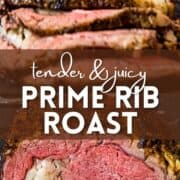
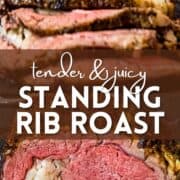
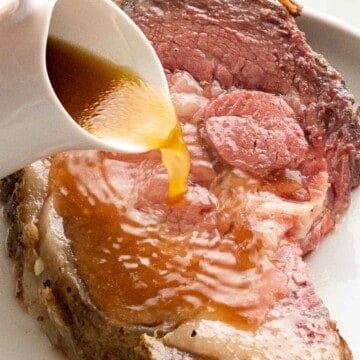
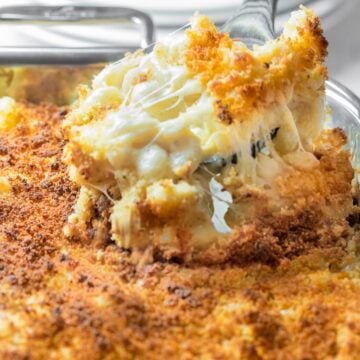
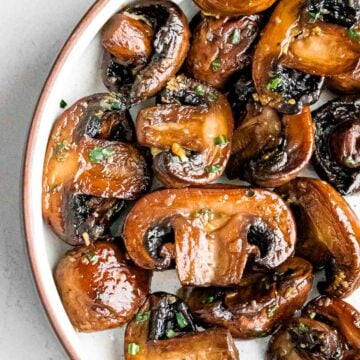
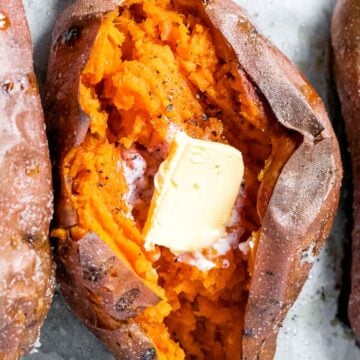
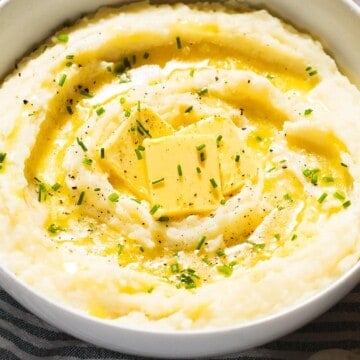
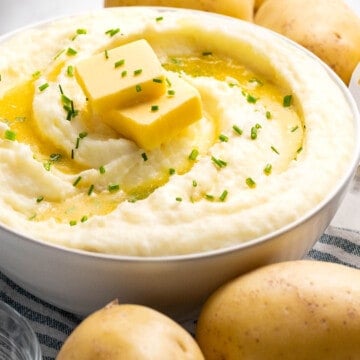
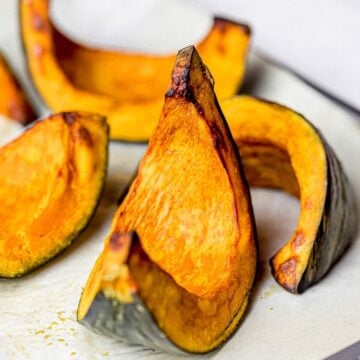
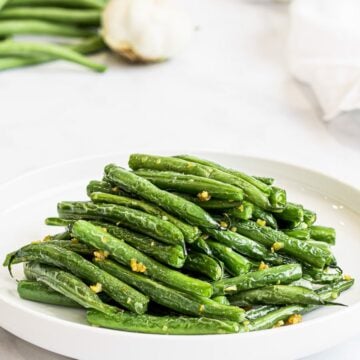
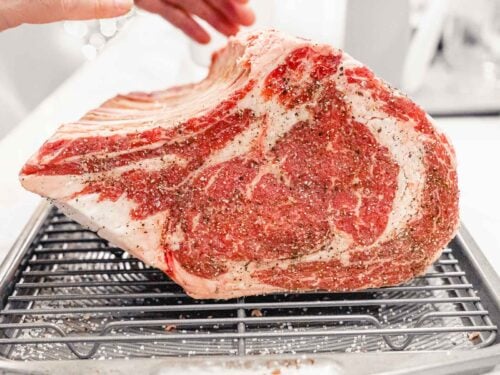
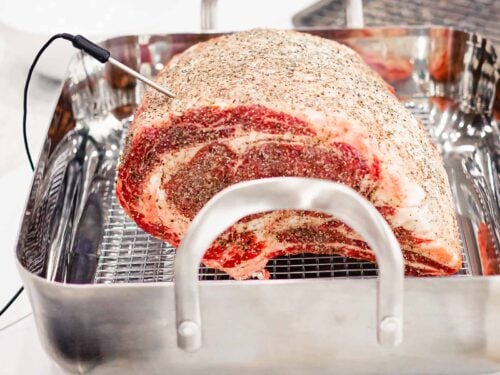
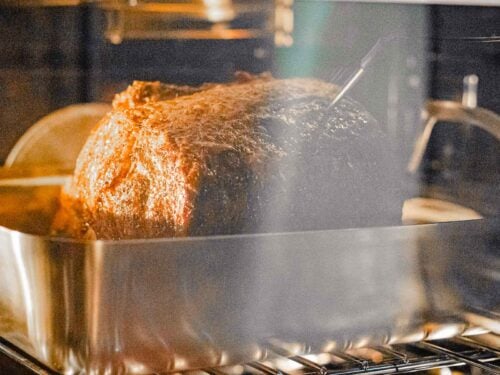
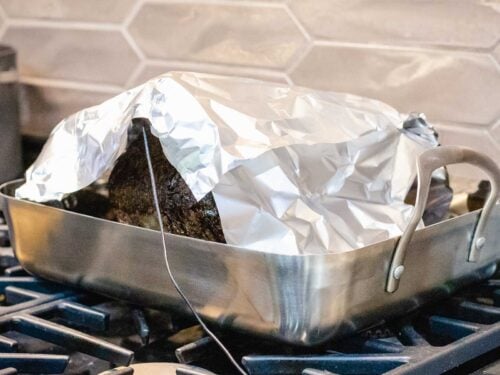
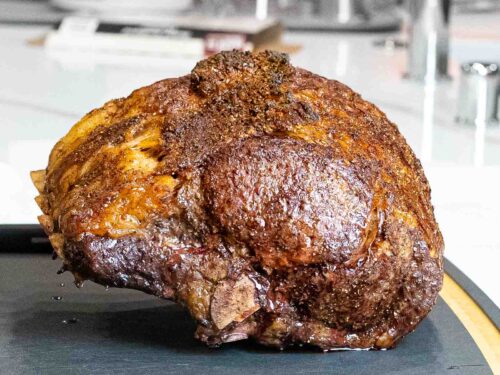
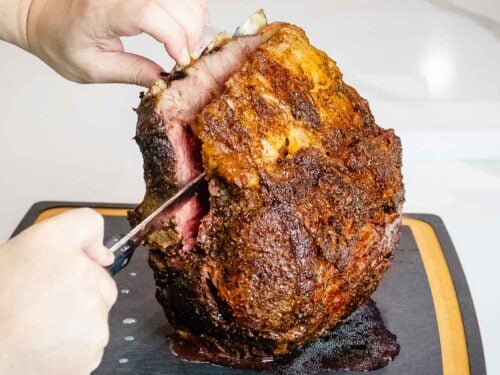
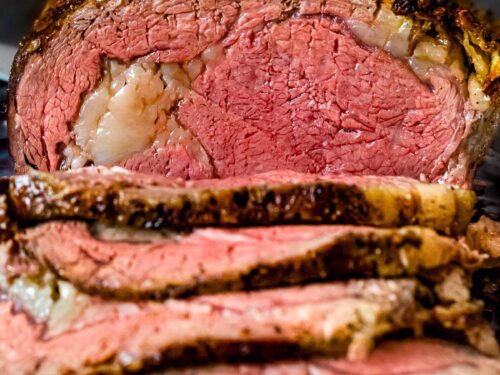
Jackie
This is the first time I managed to make a near perfect rib roast. Next time I might take it out a tad sooner as it was a little over cooked but still delicious! Great recipe. Thank you!
Jamie
That's great to hear Jackie! So happy you enjoyed it!
Jan
So I'm confused if I take it out of the oven at the time it says and then it raises to the final temperature when I put it back in the oven to sear it isn't that going to cook the inside more,
Jamie
Hi Jan! If your oven is properly heated, it shouldn't take long to sear the outside so the inside shouldn't cook more. The prime rib should only take about 4 to 8 minutes for the reverse sear. Hope that helps!
Samantha
Hi,
I'm planning to make this recipe for Christmas this year. We will have 7 bones in our roast and I'm wondering if we should have the butcher cut it into 2 roasts to cook at the same time, or leave it as-is (in which case, how long should we plan on the roasting taking)?
Hannah F
I was a bit nervous when my 5.5 lbs / 2.54 kg roast reached 118 after only 2 hours in the oven. I have a full-on gas unit without digital (high end but simple) and a lowest option for 250F. I had to let the roast rest for an hour while I finished off my other dishes, including an au jus (since the pan drippings were almost non-existent). What can I say? This roast was perfection.
Jamie
Thank you Hannah! That's wonderful it turned out perfect! 🙂
Betty
Hi, your recipe looks so easy but delicious. I also have a roast about 9.5 lbs, can you give an estimate on how long it might take. Thanks for sharing
Jamie
Hi Betty! It took us about 4 hours of roasting in the oven to reach medium rare. We set it on the counter for 1 to 2 hours first to help with faster cooking. Hope that helps!
Joe S
I have a 12 1/2 lb roast. I’m thinking it needs around 3 hrs to get to room temp and 5 1/2 hrs at 250 degrees?
Jamie
Hi Joe! I'd avoid leaving the roast out for that long due to food safety issues. I would leave it out at room temperature for 1 hour and then place it in the oven. I can't say for sure what the exact roasting time would be but 5.5 hours sounds reasonable. I hope that helps!
Greg
This is the best method of comes out perfect every time. Make sure you peel back the fat cap and season. I cover mine in a blooming onion horseradish sauce before cooking its fantastic!